Designing With Composites: The Why, When and How
More than 30 years ago as a windsurfing nut and an engineering student I was building windsurf boards and became enthralled with composites. It was the intrigue of what structures you can make with what amounts to glue and string. Composite use ranges from the most sophisticated fighter jets in the world to hot tubs.
STRONG FAMILY TIES
When we say composites, the reference is Fiber-Reinforced-Polymer composites, FRP. The most common glues or the polymer matrix of FRP is polyester or epoxy-based resins with variations that boggle the mind. Performance characteristics in the matrix can encompass strength, durability, high temperature performance, fire resistance, manufacturing ease, or cycle time to name a few. The most common “strings” or fibers are variations of fiberglass and carbon fiber, popular where very high strength (and stiffness) to weight is concerned (although carbon is still much more costly than glass). There are a handful of families of fiberglass and dozens of families of carbon fiber, each with their own performance attributes. Some examples of glass fiber are E-glass which is the most balanced cost-effective fiberglass, S-glass a stronger and stiffer form, but also more costly than E-glass and A-glass which is used when alkali resistance is needed such as with concrete. GFRC, for example, uses A-glass. Carbon fiber properties vary from higher strength to higher stiffness, trading one attribute for the other. High strength carbon fibers have a stiffness approximately equal to steel, while high stiffness carbon fibers can be three times that of steel.
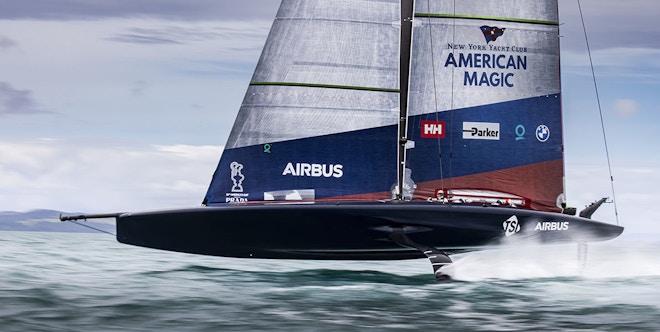
Figure 1: All carbon fiber hull, rudder, foils and mast on the 2020 America’s Cup boat America Magic
Our firm has had the opportunity to be involved in projects ranging from the highest end America’s Cup race yachts (Figure 1) to aerospace, transportation, industrial, and architectural applications. While the range of uses for composites varies considerably, the choice of using an FRP and the choice of what kind of FRP usually follow a similar trajectory.
SELECTION PROCESSES
Can the product be made from other materials? Will performance suffer from the choice of building with another material? How do composites compare with the alternatives? Because composites are so different, care must be taken to consider the entire system rather than simply comparing the cost per square foot. Will composites reduce the support system? Will it impact the primary structure? How does it compare environmentally?
The performance characteristics that often lead to the selection of which FRP option is best are;
Strength and stiffness to weight ratio, exploited mostly by applications such as sports and aerospace equipment.
Ability to cater the material properties of FRP to the structural needs of the project.
Complexity of the shape, and the manufacturability of the product.
Overall weight consideration since most structures can be built lighter with FRP.
Chemical, fire, and heat resistance.
Figure 2 shows the specific strength and stiffness of several conventional materials along with several styles of FRP. Specific properties refer to the strength or stiffness you get per pound of the material. The main take-away from the chart is that many materials, although very different, have very similar specific properties until you get to Composites. FRP opens the door to structural performances far beyond any materials for most applications. Cost performance can sometimes be another matter.
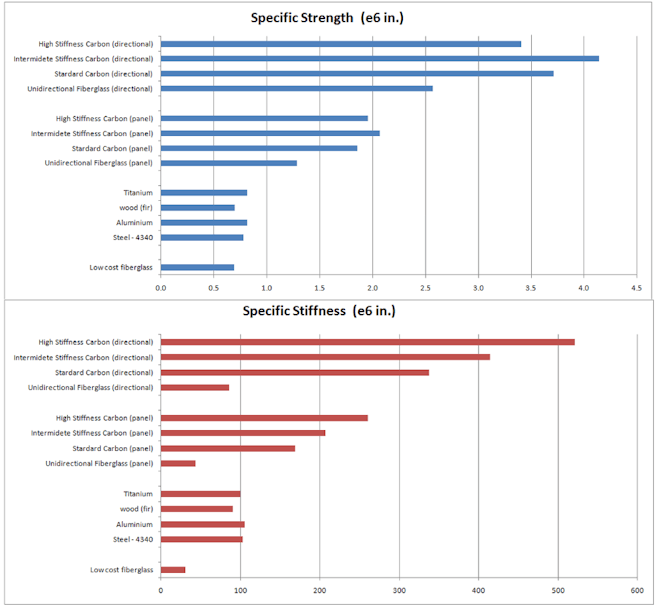
Figure 2: Strength and stiffness comparisons between various FRP styles and other materials.
FRP can alter material properties in many forms. First is the fiber selection, which is obvious at this point, but equally as important is the directionality of the fibers in the laminate. Fibers can be laid in a laminated structure in the direction of the loads, which will greatly reduce the material quantities needed. A simple analogy would be a long vaulted roof or ceiling. The loads are primarily in the short direction of the arch, so a laminate could have a dominant amount of fiber, say 75% in this direction, thus not wasting the strength and associated weight in the long direction as you would need to do with a more conventional material. FRP is therefore “anisotropic” as opposed to “isotropic” as are metals for example.
Geometric complexity is a strong driver when selecting FRP. It is obvious from the yacht picture above that developing a strong, complex curved, and fair shape is relatively easy with composites compared to alternatives. Many products simply cannot be achieved with other materials without compromising shape, weight, or structure. Coincidentally, another benefit of FRP is that, because of its lightweight nature, molds are lighter than they would need to be to support other heavier cast materials. This alone will translate to lower cost tooling.
With performance sports equipment the benefits of light weight can be obvious. But with many projects, for example the FRP façade of SFMOMA as pictured below, the weight advantage may not be quite as obvious. This undulating FRP façade is constructed of over 700 unique shaped panels, typically about 24 x 5 feet. Each panel is about 400 lbs. (3.3 pounds per square foot). This dramatically reduced the backup support structure. It could even have reduced the primary building structure if the benefits had been realized earlier in the design. Shipping, handling, and installation (tower crane reach for example) benefit from lower weight as well.

Figure 3: San Francisco Museum of Modern Art (SFMOMA) east facade of FRP panels.
The wide variety of properties available with FRP allows designing to varying conditions both structurally and performance wise. For example, neither glass nor carbon fibers burn, thus neither contribute to combustion. The resin on the other hand is an organic compound which can support combustion and chemical degradation. Hence the choice of resins is important for environmental performance. In the façade example (Figure 3), the composition of the resin has been altered to meet the appropriate fire, smoke, and structural requirements. Figure 4 is a 24-foot diameter, 700-foot-long duct in a power plant. In this case, the FRP resin was formulated to resist specific chemicals and also had to perform structurally at temperatures up to 300 degrees F; same fibers but different resins.
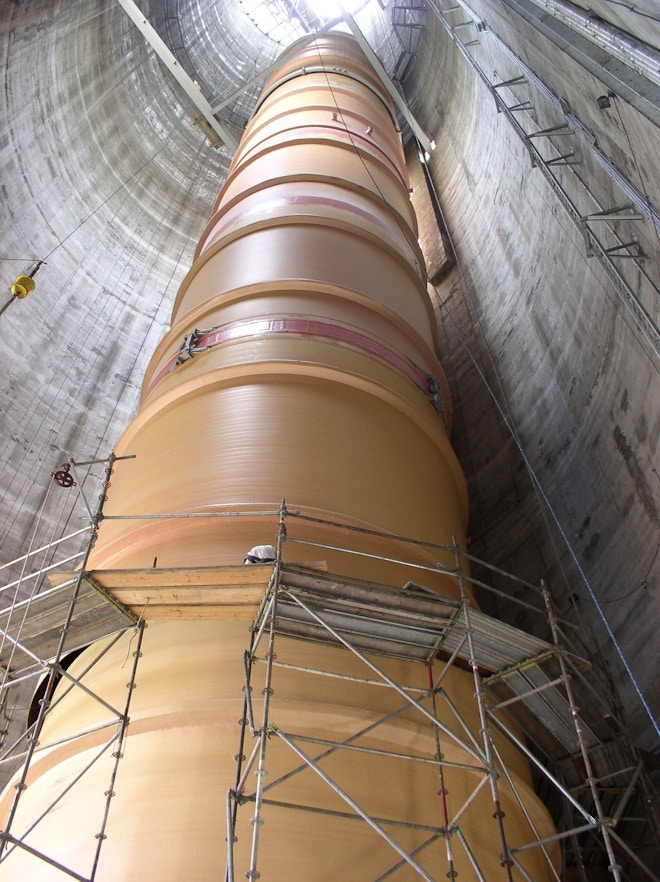
Figure 4: A 24’ diameter 700’ long FRP power plant duct employs a resin matrix specifically formulated for chemical resistance and high temperature exposure.
Once the design is determined to be a candidate for FRP, the engineering process begins. FRP structural design begins along a similar path as that of conventional materials, but then diverges into the selection of the constituent materials for the desired performance. This is also the time to select the manufacturing methods best suited to these selections and the end product requirements. These steps are then taken forward to the definition of the physical properties of the FRP laminate. The engineering of the material in the structure will involve thickness, stiffness and secondary stiffeners, local reinforcements in the laminate, and fiber orientation. All these factors contribute to the structural efficiency of the product and therefore the overall quantities of material consumed.
THE MOLDING PROCESS
There are many ways to mold and process FRP laminates. Most determine the amount of resin in the final laminate. The fiber-to-resin ratio will also have a significant effect on performance. Higher resin contents can lead to easier and lower cost construction as well as enhanced surface finishes. Higher fiber content will improve mechanical properties and, consequently, overall weight. Additionally, high fiber content tends to produce lower combustible material, provided the available resin choices can support the manufacturing process.
With the constituent materials selected, the next parameter is to determine the architecture of the fabric. There is a spectrum of options ranging from short, chopped fibers which make a “mat”, to woven, or to unidirectional and multidirectional fabrics (Figure 5).
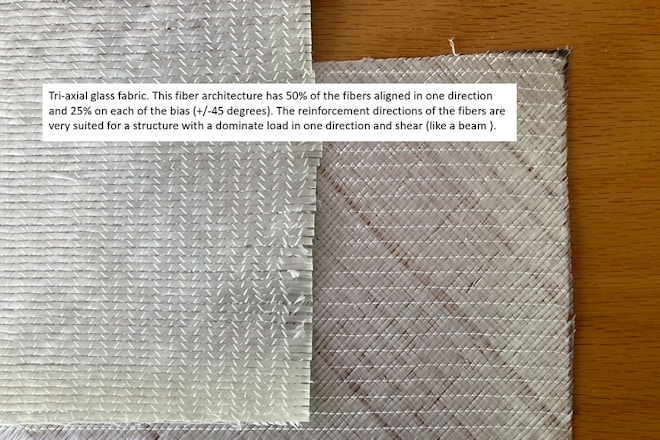
Figure 5: Example of a multidirectional fabric.
The drivers for this selection can be many. Mat and woven layer fabric architecture produces more quasi-isotropic final materials. These products are typically more articulated in shape, can adapt to a wider variety of manufacturing processes, and generally produce the lowest cost options. These materials create laminates whose mechanical properties are not directional, and therefore lend themselves to more traditional engineering methods. Using directional fibers, such as triaxial or unidirectional fabric, allow for an opportunity to optimize structural performance, although it also requires another level of sophistication in analysis and more care to ensure the fabrics can be aligned properly during manufacturing.
The engineering of most composite structures is performed with finite element (FE) computer simulations. Developing the proper mechanical properties based on specific materials and fiber directionality is well developed in composite engineering. Meanwhile, it is also slowly making in-roads into more traditional building engineering practices, although it remains somewhat foreign to many engineers. Meanwhile, building codes are challenged to keep up with the pace of change in materials and design tools. The knowledge and software tools to analyze directionality in composites are well established and are slowly becoming more prevalent in the building industries’ engineering workplaces. Figure 6 is an example of an FE model which applied to the SFMOMA project pictured in Figure 3.
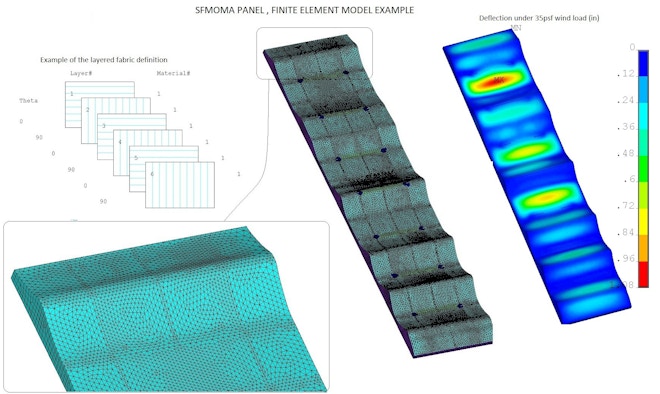
Figure 6: Typical finite element analysis output showing stress concentrations in a facade panel for the SFMOMA project (Figure 3).
SUMMARY
Composite materials, particularly in their more common glass fiber form, have made in-roads into notable façade projects in recent years. In many applications the benefits of composites over conventional materials will be obvious. When used correctly, major hurdles in installation, fire, and structural code compliance can be overcome while revealing unique and otherwise unavailable aesthetic opportunities. To this author, the genie is out of the bottle. With the increased usage of FRP in facades combined with the new emphasis on energy efficiency, complex shapes, and strong, lightweight systems, the use of FRP will likely continue to grow.

Kurt Jordan
Jordan Composites Inc
Send Email
Kurt Jordan has spent 35 years engineering composite structures. He specializes in the use of computer simulations to analyze fiber reinforced composite structures. Projects have ranged from large structures in the power generation industry, architectural components, rail and road transportation components, and large yachts. A repeated highlight in this career has been involvement as a structural designer for nine America’s Cup Yacht racing teams, dating back to 1992.
Looking for something specific?
Search our extensive library.
FTI’s SKINS email is the central source for the latest in building skin trends and research.
All emails include an unsubscribe link. You may opt out at any time. See our privacy policy.









